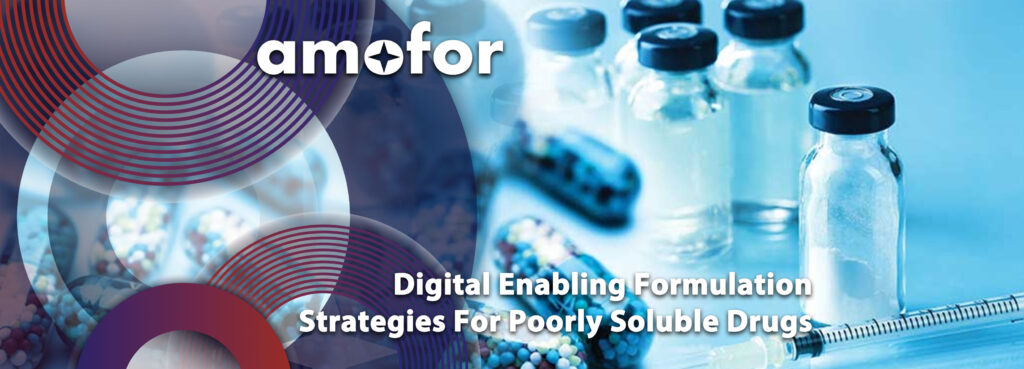Why do many promising newly designed drug molecules struggle in clinical trials? The key often lies in the hidden pitfalls of drug formulation. This is precisely why a clear and well-planned drug formulation strategy is crucial for successful clinical trials.
Understanding Traditional Drug Formulation Methods
The journey of drug formulation begins with an Active Pharmaceutical Ingredient (API). The objective is to process this molecule using different manufacturing techniques to achieve specific properties. These may include enhancing bioavailability, ensuring sustained release, or creating a pH-dependent release that targets specific body areas, like the gastrointestinal tract or stomach. A significant challenge in modern drug formulation is the limited water solubility of many new molecules, especially larger ones. This issue leads to low plasma concentrations and reduced therapeutic effectiveness. To address this challenge, well-planned and innovative formulation strategies are crucial.
Standard methods involve crystallizing the API for purification and combining it with excipients to form a tablet. However, this approach has significant limitations. A more effective technique is formulating the drug in a non-crystalline state, known as amorphous solid dispersions (ASDs). By incorporating the API into a polymer matrix using techniques like spray drying or hot melt extrusion, the drug’s solubility and release characteristics are significantly improved. This polymer-based enabling formulation approach is amofor’s specialty.
Selecting the right polymer is the crucial first step in ASD formulation development. Formulators usually have the choice of five to ten polymer options for this task. Selecting the most suitable polymer and API load for a specific API is typically a trial-and-error process. The optimal choice varies depending on the unique intermolecular interactions between the API and the polymer, which are frequently overlooked. The process is typically driven by trial-and-error screenings, like an “experimental kitchen”. This lack of a systematic approach underscores the need for more precise and scientifically grounded methodologies.
amofor’s Formula for Success: Structured and Tailored Approaches
amofor uses a structured and methodical in-silico approach to drug formulation that employs physics-based in-silico modelling to gain a deeper understanding of the formulation process. By analyzing the intermolecular interaction profiles and properties of the API, we identify the best stabilizing polymer individually for each molecule. We also assess various manufacturing techniques, like spray drying, hot melt extrusion, and co-precipitation, to find the optimal manufacturing route for each formulation. Ultimately, we have developed programs capable of predicting the stability of a formulation under various conditions. This is particularly important for preventing product failures during storage, as high humidity inevitably leads to a certain water absorption, significantly affecting the ASDs’ performance.
Our methods are grounded on little experimental data sets like solubilities in organic solvents that characterize the true net intermolecular interaction profile of a molecule. This intermolecular interaction profile is not assessable by conventional methods looking at the API’s molecular structure only – in case of complex API molecules, classical approaches often fail as these molecules exhibit deviating and hardly predictable intermolecular interactions.
Clients often reach out when facing formulation stability or manufacturing challenges, such as selecting unsuitable solvents or suboptimal process conditions. For example, we assisted a client who faced post-storage dissolution performance issues and unexpected occurrence of crystallization. They were puzzled as to why certain polymer grades succeeded while others failed under specific conditions, revealing the complexity of their data and the critical need for an in-depth understanding of the fundamental underlying mechanisms. Such complexities, however, cannot be resolved experimentally with high-throughput screenings or design of experiment-campaigns alone.
Bridging this gap, amofor’s methodical approach is designed to tackle a wide array of formulation challenges. Whether it’s excipient selection for pre-clinical and clinical formulations, phase changes, release and dissolution issues, or stability concerns in amorphous formulations, our data-driven strategy enhances the speed and precision of the development process. Our models, which have undergone rigorous testing, consistently show remarkable predictive accuracy. This is particularly true for long-term stability, underscoring the effectiveness of our approach.
The Impact of a Model-Driven Approach
The transition to model-driven strategies marks a significant shift from the traditional trial-and-error approach, enabling more streamlined drug development. This not only reduces development time and costs, but also improves product quality, ultimately impacting treatment outcomes. Also, regulatory authorities strongly encourage the transition to such formulation development approaches in their quality-by-design principles (e.g. ICH Guidance for Industry Q8(R2)). Our role is to support clients at every stage of drug development, from enhancing bioavailability in the early, preclinical phases to refining formulations for clinical use. One key aspect of our approach is the creation of a digital twin of the formulation, which allows to provide tailored recommendations, such as selecting the ideal polymer with respect to drug load and further excipients, thus improving solubility, release profiles, and overall physical stability. Our methods complement traditional testing required for regulatory compliance, thereby speeding up the development process.
We invite drug formulators to collaborate by sharing data sets from early-stage screenings. Just pick typical differential scanning calorimetry data and solubilities in a few organic solvents and we will help to improve your formulation.
Contact us and de-risk your formulation approach!

